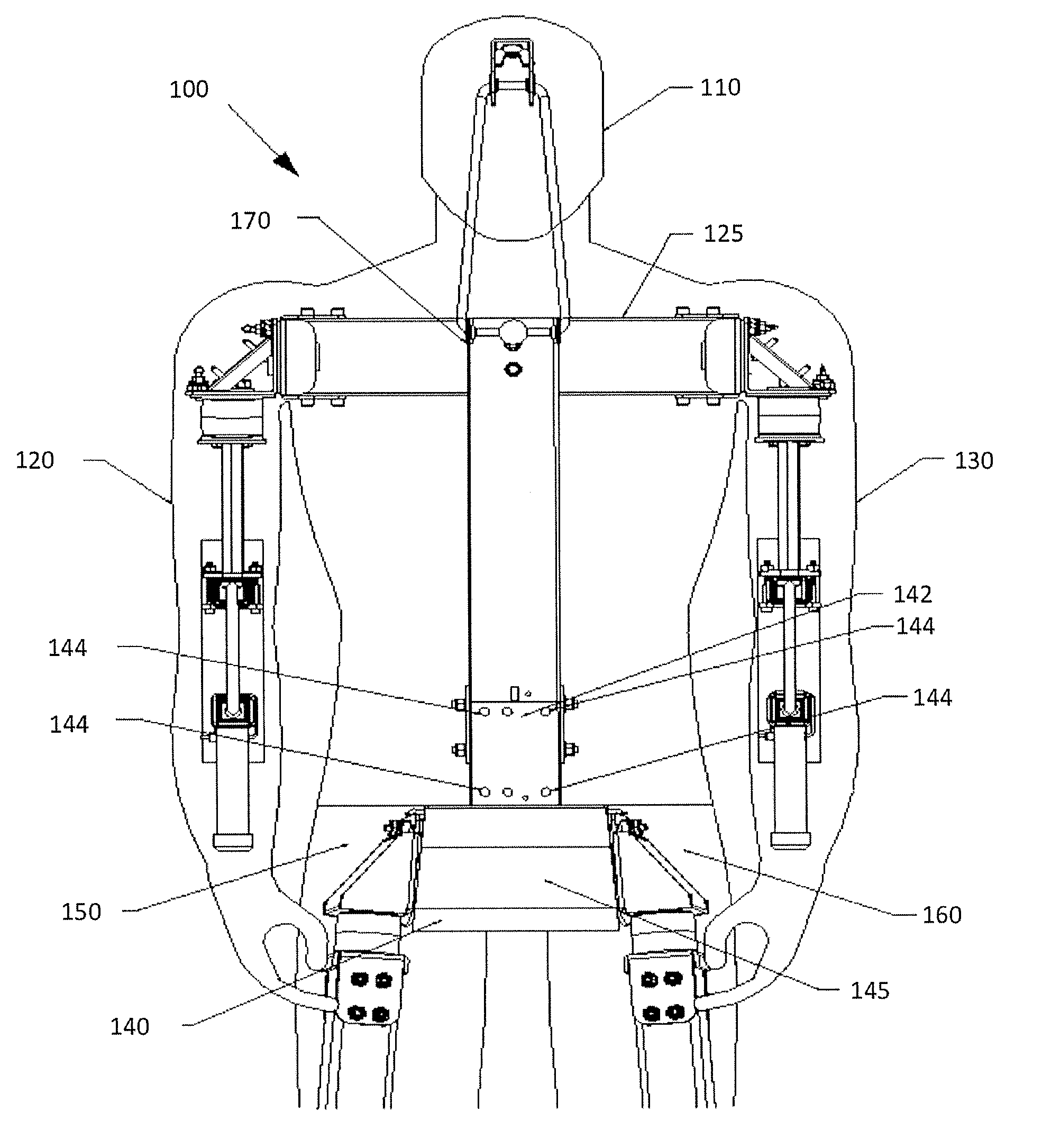Training mannequin for use in sparring, self-defense, law enforcement, and combat sports training
a training mannequin and self-defense technology, applied in the field of training mannequins, can solve the problems of not looking, feeling, or moving like a human opponent, punching bags do not provide useful visual anatomical references to target, and severely limited training repetitions
- Summary
- Abstract
- Description
- Claims
- Application Information
AI Technical Summary
Benefits of technology
Problems solved by technology
Method used
Image
Examples
Embodiment Construction
[0044]Referring now to the drawing, in which like reference numbers refer to like elements throughout the various figures that comprise the drawing, FIG. 1 illustrates a preferred embodiment of the training mannequin 100 including a torso component 110, and a plurality of limb assemblies, including a left arm component 120, a right arm component 130, and an optional leg pair including a hip component 140, a left leg component 150, and a right leg component 160. Torso component 110 may be sculpted to substantially resemble, in shape and size, a life-size human person, possibly in the form of a muscular male human combatant. Torso component 110 may include an integral trunk section, a neck section, and a head section. Each of the plurality of limb assemblies is attached to the torso component at a limb attachment point. For example, the left arm component 120 and right arm component 130 are mounted to torso component 110 by a shoulder plate 125 that extends between left arm component ...
PUM
 Login to View More
Login to View More Abstract
Description
Claims
Application Information
 Login to View More
Login to View More - R&D
- Intellectual Property
- Life Sciences
- Materials
- Tech Scout
- Unparalleled Data Quality
- Higher Quality Content
- 60% Fewer Hallucinations
Browse by: Latest US Patents, China's latest patents, Technical Efficacy Thesaurus, Application Domain, Technology Topic, Popular Technical Reports.
© 2025 PatSnap. All rights reserved.Legal|Privacy policy|Modern Slavery Act Transparency Statement|Sitemap|About US| Contact US: help@patsnap.com



